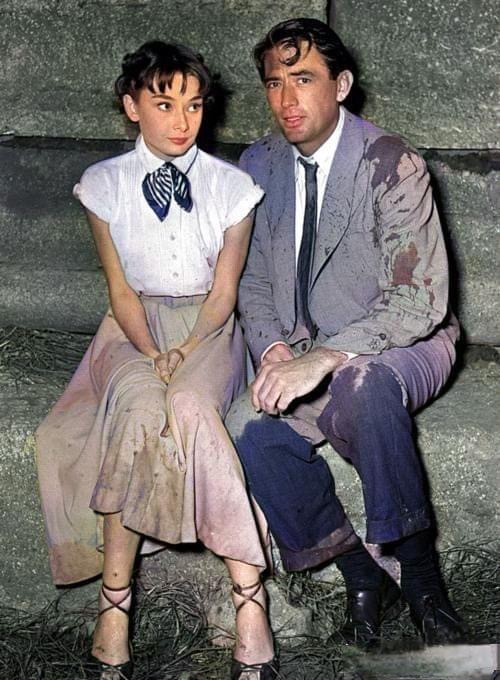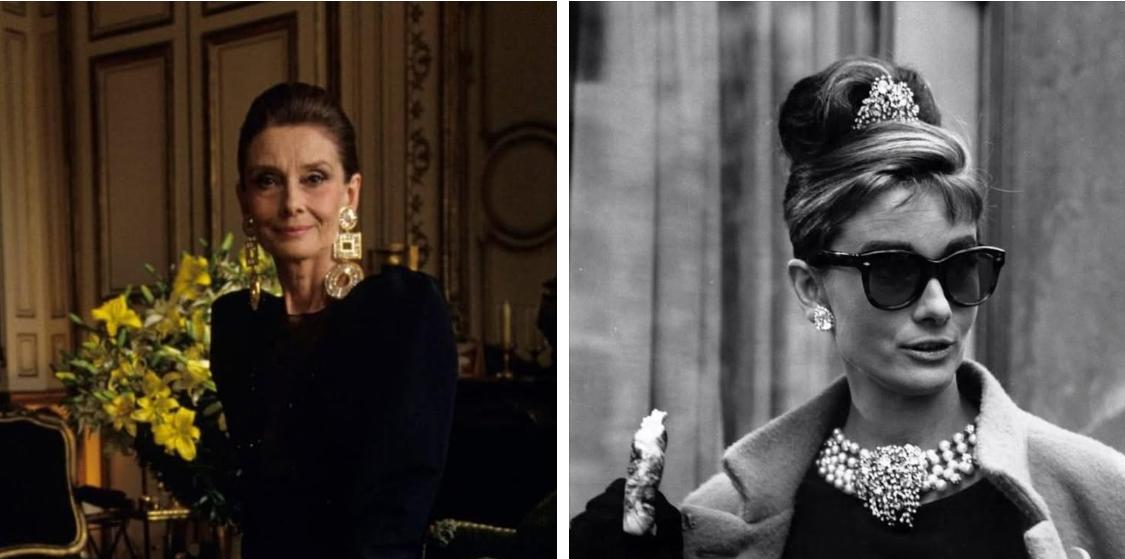
Audrey Hepburn’s performance as Princess Ann is nothing short of enchanting. She perfectly embodies the character’s innocence and yearning for a life beyond the constraints of royal duty.
Hepburn’s transformation from a sheltered princess to a spirited young woman exploring the vibrant streets of Rome is a joy to watch. Her iconic scenes, such as the moment she joyfully rides a scooter through the city or dances at a local café, are etched in cinematic history. Hepburn’s natural charm and grace make her portrayal both relatable and aspirational, allowing viewers to empathize with her plight.
Gregory Peck, as Joe Bradley, complements Hepburn beautifully. His character is initially driven by ambition—seeking to capture a sensational story about the elusive princess—but as the day unfolds, he finds himself genuinely captivated by her spirit. Peck’s performance is layered, showcasing a man torn between his professional responsibilities and his burgeoning affection for Ann. The chemistry between Hepburn and Peck is palpable, creating a dynamic that feels both playful and deeply emotional.
The film’s screenplay, written by Dalton Trumbo, is sharp and witty, filled with memorable lines that have become part of the cinematic lexicon. The dialogue flows effortlessly, enhancing the film’s lighthearted tone while also allowing for moments of introspection. The humor is cleverly woven into the narrative, providing levity to the more serious themes of love and sacrifice.
Visually, “Roman Holiday” is a feast for the eyes. The cinematography by Franz Planer captures the beauty of Rome in a way that feels almost like a character in itself. The film takes full advantage of the city’s iconic locations, from the grandeur of the Colosseum to the romantic allure of the Tiber River. These settings not only serve as a backdrop for the romance but also symbolize the freedom and adventure that Ann craves. The use of location shooting adds an authenticity that enhances the film’s charm, immersing the audience in the sights and sounds of Rome.
The film’s ending is particularly noteworthy, as it deviates from the typical romantic comedy formula. Rather than a fairy-tale conclusion, “Roman Holiday” offers a bittersweet resolution that emphasizes the transient nature of the characters’ relationship. Ann returns to her royal duties, and Joe is left with the memory of their day together—a poignant reminder that some loves are meant to be fleeting. This choice adds depth to the narrative, allowing for a more profound reflection on the nature of love, duty, and personal sacrifice.
“Roman Holiday” has left an indelible mark on popular culture, influencing countless films and romantic narratives that followed. Its legacy is evident in the way it continues to inspire filmmakers and actors alike. The film’s themes of freedom, love, and the quest for identity resonate just as strongly today as they did in the 1950s.
In summary, “Roman Holiday” is a timeless classic that beautifully combines romance, humor, and a touch of melancholy. With its stellar performances, exquisite direction, and unforgettable setting, it remains a beloved film that captures the hearts of new generations. Audrey Hepburn and Gregory Peck’s performances, coupled with the film’s unique storytelling, ensure that “Roman Holiday” will continue to be cherished for years to come, celebrating the joy and heartache of a love that, while brief, is profoundly impactful.





